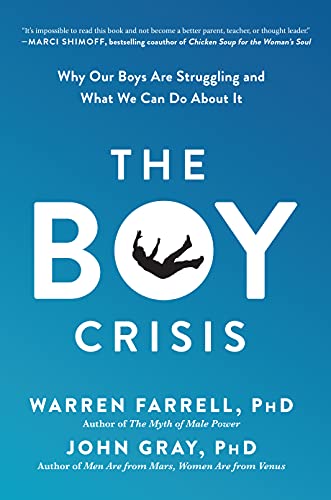“The Boy Crisis,” authored by Warren Farrell and John Gray, sheds light on the challenges faced by boys and young men in today’s society. Drawing from extensive research and personal stories, the book explores various factors contributing to the struggles experienced by boys and offers insights into how we can address these issues. In this blog post, we delve into the top 10 lessons from “The Boy Crisis,” uncovering Farrell and Gray’s unique perspectives and providing valuable insights into the well-being and development of boys.
“Boys’ biological disadvantage is their comparative lack of an instinct for empathy. A boy’s ability to develop empathy and emotional intelligence is a result of the way his biological, psychological, and social needs have been met.”
Lesson 1: The Importance of Father Involvement
Father involvement plays a crucial role in the healthy development of boys. Research highlights the impact of positive father figures in boys’ lives, emphasizing the need for engaged and nurturing fathers. Active fatherhood provides emotional support, role modeling, and guidance, contributing to boys’ overall well-being and helping them navigate the challenges of adolescence.
Lesson 2: The Educational Gender Gap
Boys face unique challenges within the education system, often falling behind their female counterparts. Factors contributing to the educational gender gap include the disparity in learning styles and the lack of male role models in teaching positions. Understanding these dynamics allows us to develop strategies to support and empower boys academically.
Lesson 3: Addressing Boys’ Emotional Needs
Boys are often socialized to suppress their emotions, leading to difficulties in expressing and understanding their feelings. Creating safe spaces for boys to explore and communicate their emotions is crucial. By promoting emotional intelligence and fostering healthy emotional expression, we can help boys develop resilient and balanced emotional well-being.
Lesson 4: Overcoming Stereotypes and Gender Expectations
Societal expectations and stereotypes surrounding masculinity can have detrimental effects on boys’ self-esteem and personal development. Dismantling harmful stereotypes is essential. Creating an inclusive and supportive environment allows boys to embrace their unique identities and interests without fear of judgment.
Lesson 5: Supporting Boys’ Mental Health
Boys face unique challenges when it comes to mental health, including higher rates of suicide and externalizing behaviors. Promoting mental health awareness and providing boys with the necessary tools and support to navigate their emotional well-being is vital. By addressing mental health stigma and offering accessible resources, we can foster a culture of mental well-being for boys.
Lesson 6: Nurturing Healthy Relationships and Communication Skills
Boys often face difficulties in developing healthy relationships and effective communication skills. Teaching boys empathy, active listening, and respectful communication is significant. By equipping them with these skills, we empower boys to cultivate meaningful connections, foster healthy relationships, and navigate interpersonal challenges.
Lesson 7: Promoting Physical and Active Play
Physical activity and play are essential for boys’ development, yet they often face limitations due to safety concerns and sedentary lifestyles. Promoting physical play, sports involvement, and outdoor activities enhances boys’ physical health, emotional well-being, and cognitive development.
Lesson 8: Addressing Academic Underachievement and Dropout Rates
Boys face higher rates of academic underachievement and dropout compared to girls. Recognizing and accommodating diverse learning styles and providing tailored educational opportunities helps boys thrive academically.
Lesson 9: Combating Violence and Aggression
Boys are more likely to exhibit aggressive behaviors, which can have negative consequences for both their personal growth and societal well-being. Teaching boys conflict resolution, emotional regulation, and non-violent problem-solving strategies is important. By promoting peaceful alternatives and fostering empathy, we can contribute to a safer and more harmonious society.
Lesson 10: Creating Supportive Communities for Boys
Boys thrive in supportive communities where their unique needs are recognized and addressed. Fostering inclusive spaces where boys can connect, engage in positive activities, and find mentors is crucial. By creating such communities, we empower boys to overcome challenges, develop their strengths, and reach their full potential.
Conclusion
“The Boy Crisis” sheds light on the challenges faced by boys in contemporary society, emphasizing the importance of nurturing their well-being and supporting their development. By implementing the lessons learned from this thought-provoking book, we can create a more inclusive, supportive, and empowering environment for boys, enabling them to flourish and contribute positively to the world around them.


